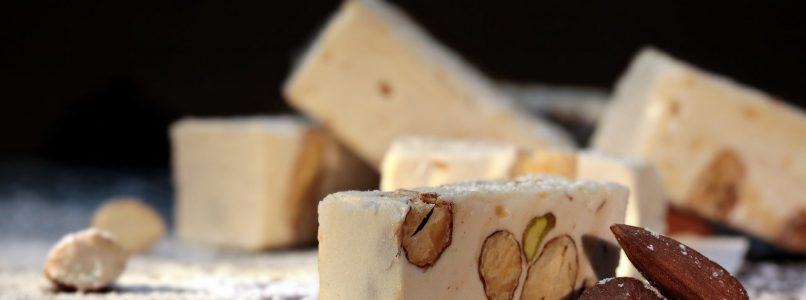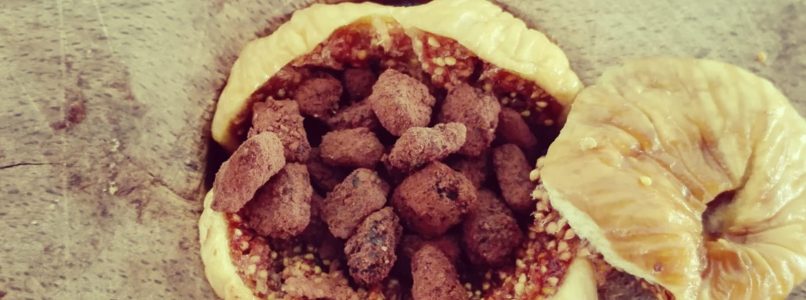In the hinterland, historical and new generation activities still keep the ancient confectionery art of Sicilian nougat alive: from Caltanissetta to Modica, here are the best ones + authentic recipe
Not only cassata and cannoli, among the specialties of the Sicilian confectionery tradition we can also include the Nougat. We have already talked about the cubaita, an ancient delicacy of Arab derivation, but today we are talking about the typical nougat of central Sicily, a hinterland rich in almond and pistachio groves. Main ingredients are indeed almonds and pistachios, including those of the Bronte and Raffadali DOPs, the latter recognized last March. There are two versions of nougat based on the consistency: hard and soft, it all depends on the cooking time and the percentage of honey and sugar used in the dough. Let's find out more about the Sicilian nougat – and also where to buy it, even online.
Caltanissetta nougat
During the second half of the 19th century Caltanissetta was considered the "city of nougat", there were eight nougat factories specialized in the artisan production of turruni (in Sicilian dialect) both hard and crumbly or bloc, made with almonds, pistachios, honey, egg white and sugar. An ancient knowledge handed down by the turrunary masters and told by the Slow Food Arca del Gusto project: the workers mix the ingredients in a copper bottom boiler and in the final cooking phase (eight hours on low heat) they add Sicilian almonds and pistachios. At the end, the dough is spread on rectangular frames and worked with wooden rolling pins. Then they spread more chopped pistachio on the surface of the blocks. The frames containing the nougat are placed under a press (formerly manual, today hydraulic) which evens the surface of the nougat and better fixes the pistachio on the external surface. When it cools down, the workers extract it from the frames and cut the nougat into pieces of 50, 100 or 250g with a machine called "cutter" in jargon, while the entire nougat preparation cycle is called the "done".

In 1884 the nougat of Caltanissetta of Salvatore Amico it won first place in the "nougat and panforte" category of the Italian General Exposition in Turin, beating the competition of its Lombard, Tuscan and Campania "cousins". Two other Nissenians, Luigi Giannone and Giuseppe Infantolino, instead obtained the gold mention. Today, unfortunately, only one of the eight historical activities has survived, the Torronificio Geraci founded in 1870 by Michele Geraci (as a boy he worked as a boy in the Infantolino pastry shop). The fourth generation, represented by the sisters Giuliana and Marcella Geraci, carries on the glorious family tradition with passion, keeping unchanged the recipe of Caltanissetta artisan nougat inherited from their great-grandfather.

From the online shop of Torronificio Geraci it is possible to order Sicilian nougat in all specialties. In addition to the classic version, there are nougats created in the early twentieth century and baptized with the names of the House of Savoy "Umberto", "Elena" and "Jolanda". The first two are covered with chocolate while the Jolanda nougats are really special: the still hot nougat is cut into thin leaves which are placed in the special frames to acquire the shape of small tiles. Each piece is filled manually with a creamy mixture based on almonds and sugar, at the end it is all covered with chocolate. And then there are "Zara", with a round shape and filled with pistachio cream, and "Pepita", a soft nougat invented at the end of the 70s by the women of the Geraci family, characterized by a whole almond inside, covering of chocolate and a golden wrapping. For those who want to know more, it is possible to book (except during the Christmas period) cooking class on the art of nougat and guided tours of the shop and laboratory in Caltanissetta.
Caltanissetta nougat, the authentic recipe
Ingrediants:
400g powdered sugar
250g whole peeled almonds
250g unsalted shelled pistachios
200g honey
1 egg white
Method:
Toast the almonds and pistachios in the oven at a moderate temperature until they have a golden color.
Separately whip the egg white until stiff and add liquid honey.
Continue whisking until the mixture becomes clear.
Mix the mixture well with the sugar, pour it into a pan and cook over low heat, stirring carefully.
When the nougat paste has hardened, according to your taste, remove the pan from the heat and mix the pistachios and coarsely chopped almonds into the mixture.
Spread the nougat inside a rectangular mold placed on baking paper.
Cover with another layer of baking paper, pressing well.
Leave to cool to room temperature.
The nougat of Licodia Eubea
In the small village of Licodia Eubea, in the province of Catania, 600 meters high in the Iblei Mountains, is the Torronificio Renna: a small artisanal and family-run production that pays homage to the recipe for white almond nougat handed down since the 1960s by Giuseppa Interligi, grandmother of the current owners. The ingredients used are all natural and there are no added sugars or preservatives: dried fruit, wildflower honey and egg whites are blended together after many hours of cooking at low temperature. At the end of this phase it is placed in the special frames where the nougat is ironed, manually cut and wrapped in a gluten-free wafer before being packaged. The available flavors of Sicilian nougat are almond, hazelnut, almond and pistachio, to be purchased directly from the site together with the other Sicilian specialties of ancient confectionery memory produced by Torronificio Renna.

The nougat of Modica
In the beautiful baroque town of Modica, on the south-eastern side of Sicily, Simone Sabaini produces one of the best chocolates in Italy with the brand Sabadì. Among the specialties there is no shortage of nougats. The ingredients are exclusively typical products of the island: "Sicilian nougats from Sabadì – says Simone – are different in consistency, quality of raw materials used and quantity of dried fruit present. It is not too hard, as is usually done in northern Italy, nor too soft. The intense and fragrant taste is given by the use of Sicilian black bee honey from different varieties of flowers and the peel of blood orange, Interdonato lemon, late Ciaculli mandarin. The pistachios are those of Bronte DOP and the Roman almonds of Noto, Slow Food presidia. And then our nougat is not too sweet because in addition to honey we only use very little brown sugar, but what makes it truly unique and special is the surprising amount of almonds and pistachios inside, over 65% ". On the website, for the Sicilian nougat, there is a dedicated section where you can buy the three soft white nougats, the roasted one and then the new mini box with assorted flavors of nougats covered with Sabadì chocolate.


